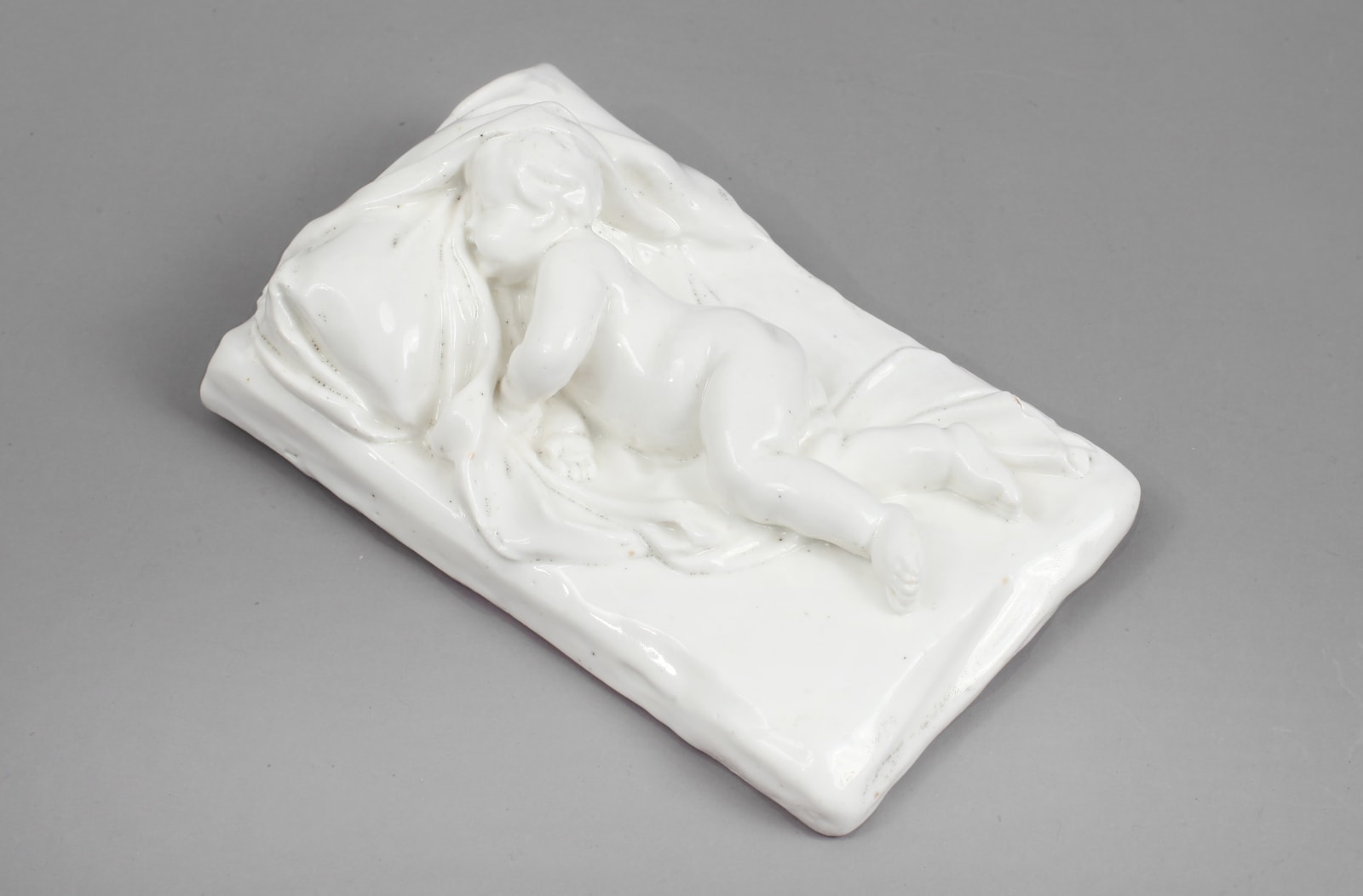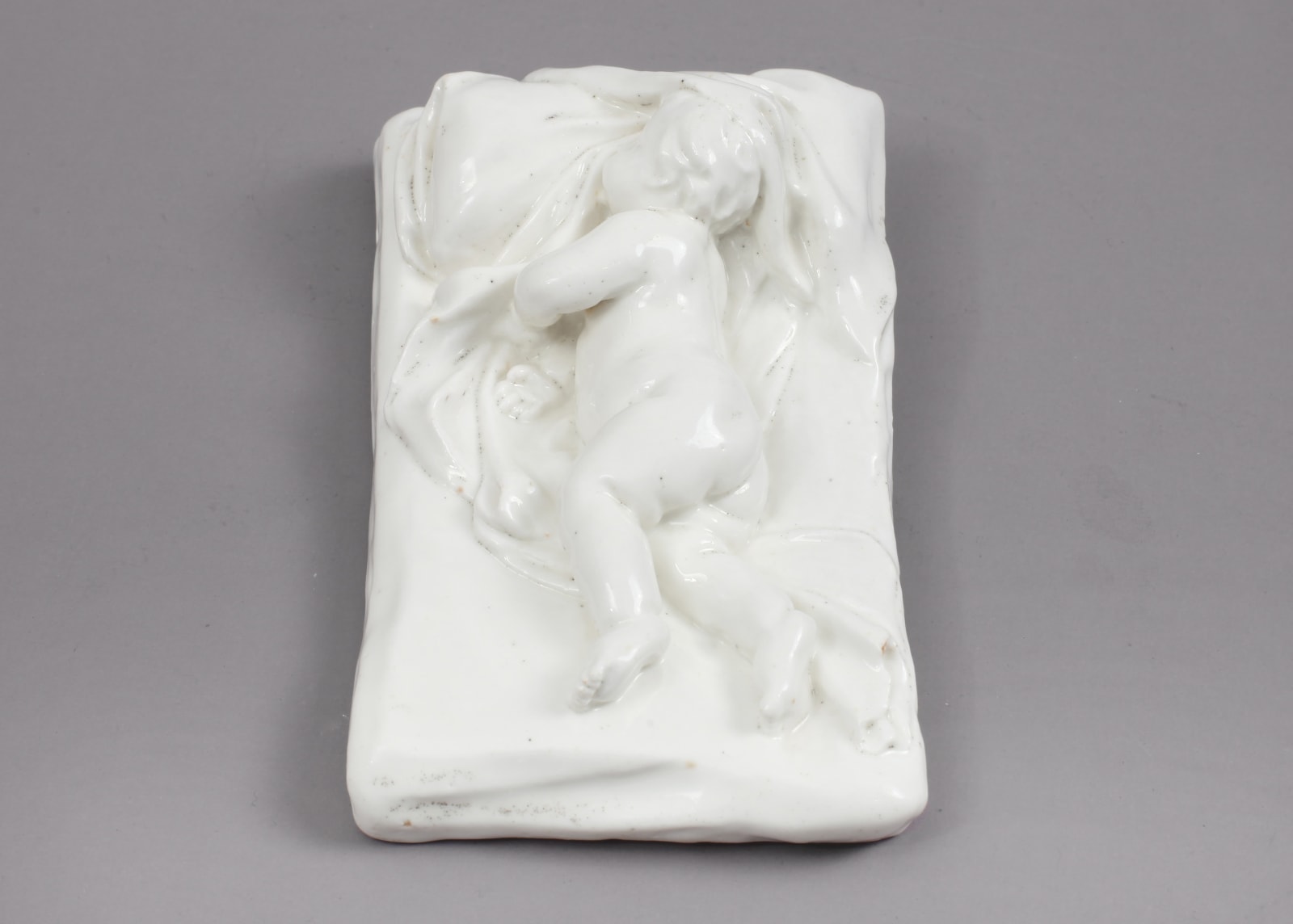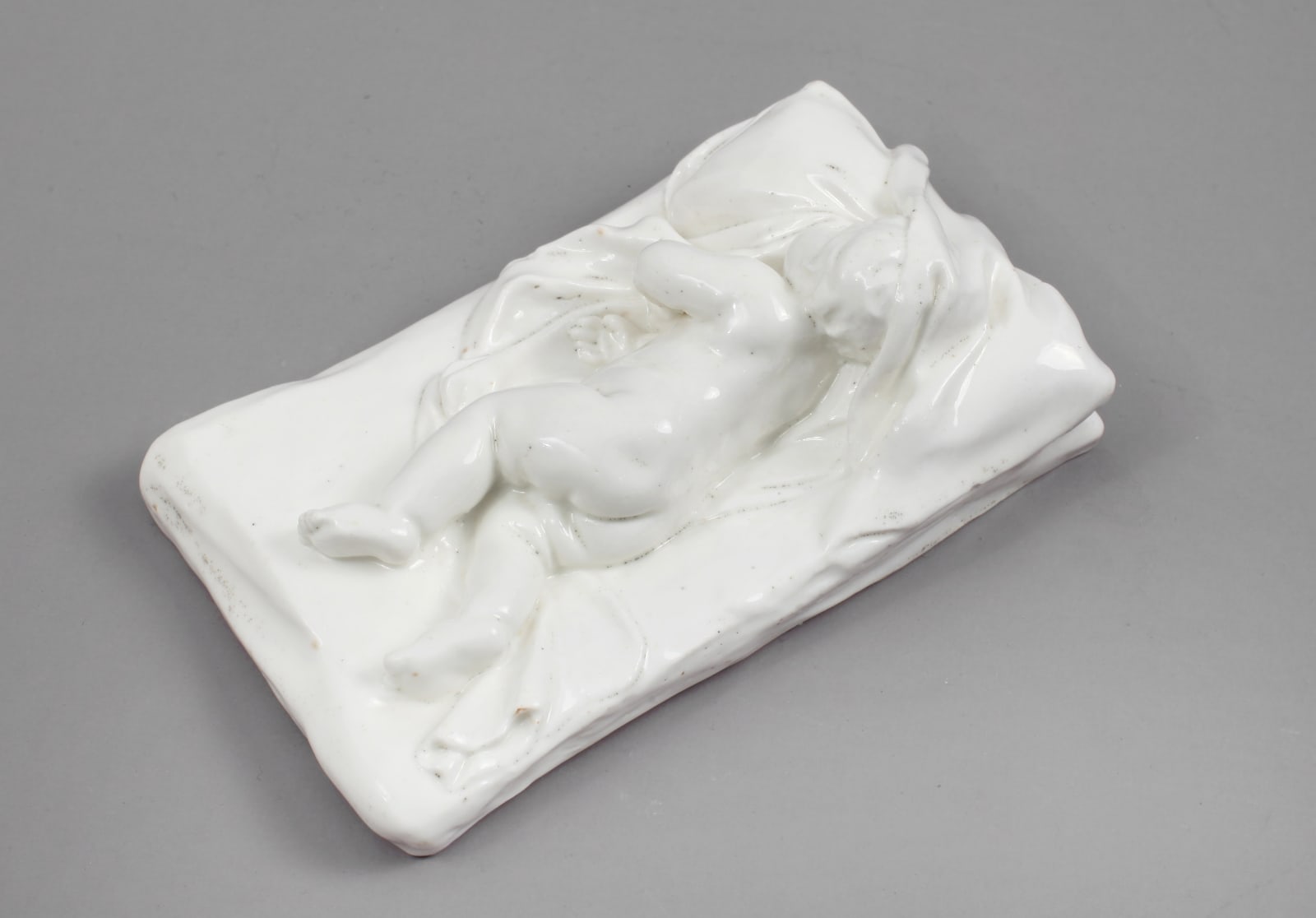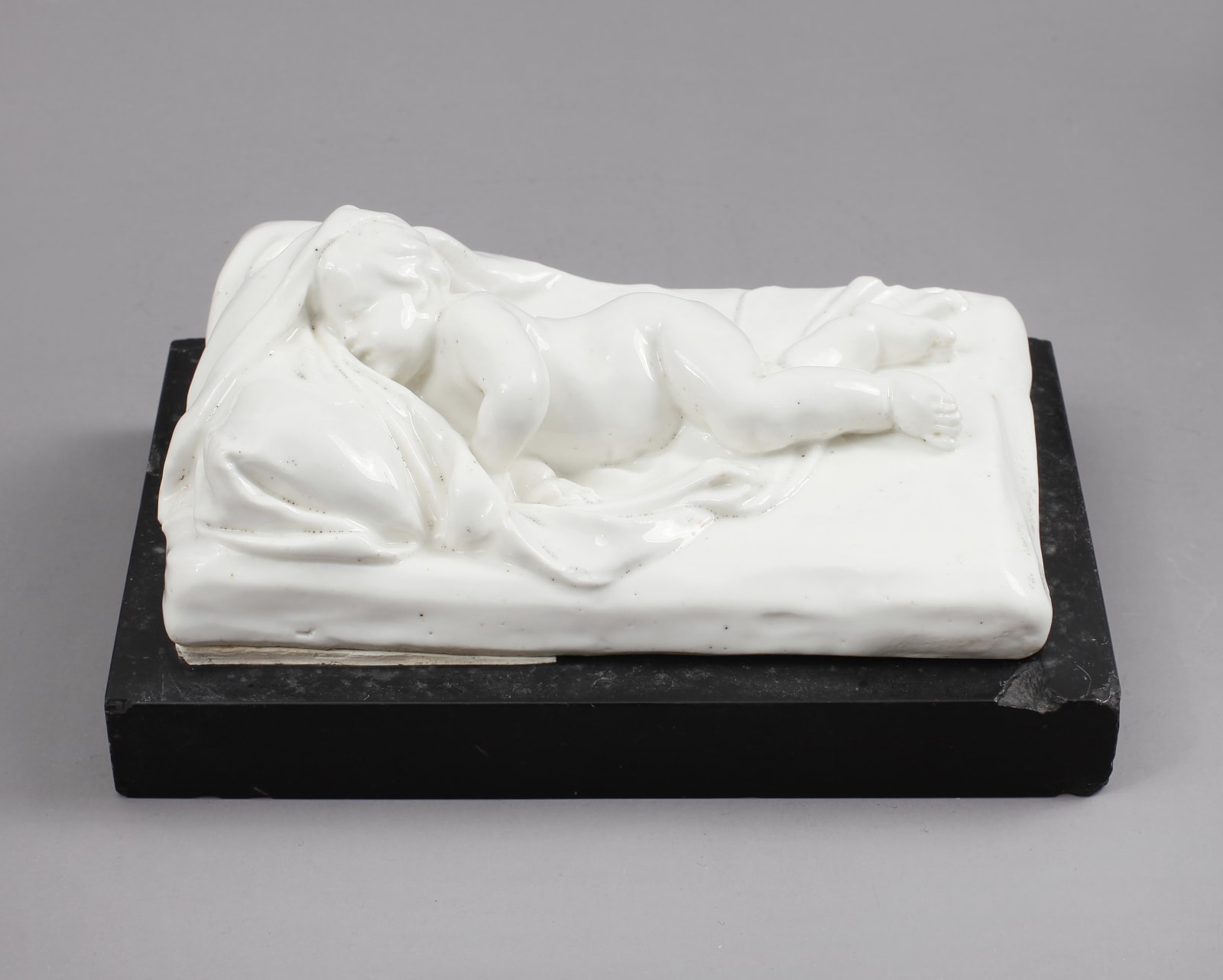



Rare and Important Chelsea Incised Triangle Period Porcelain Model of a Sleeping Child , Circa 1746
Further images
The Rare and Important Chelsea Incised Triangle Period Porcelain Model of a Sleeping Child after Francois Duquesnoy (called ‘Il Fiammingo’). The baby boy sleeping peacefully and lying to one side against a pillow with the drapery of crumpled sheets across the soft surface of a bed. Set on a large and black polished stone base.
Dr Geoffrey Godden one of the greatest scholars of English Porcelain Research during the twentieth century, in his article in the Antique Collector May 1983 discusses a variety of design sources. The model firstly derives from the work of Francois Duquesnoy (1594-1644) called ‘Il Fiammingo’ a sculptor of the Baroque period, his Flemish idealised representations are quieter and more restrained than of the Italian Baroque. There is however a similar bronze model, to that sculpted by Francois Duquesnoy, by the very slightly later, although there is a slight period of overlap, Netherlandish sculptor Artus Quellinus (1609-1668). It is highly possible that a degree of inspiration from Quellinus is present in this model too, see a signed Ivory by Quellinus dated 1641 in the Walters Art Gallery in Baltimore.
The model was also produced at the Royal Vincennes Porcelain Manufactory during the period of time when Francois Boucher, held the title of ‘first Painter to the King’. Boucher’s paintings and drawings served as highly popular sources of inspiration for artists working in a variety of media in the middle decades of the eighteenth century. Engraved prints made after paintings or drawings by Boucher were widely circulated, especially those engraved by Gabriel Huquier of the Rue St Jacques. These provided artists with compositions that could be faithfully reproduced in smaller scale or translated into the new, novel and highly fashionable medium of porcelain.
This extremely rare and important early English porcelain model is one of only two examples known, the other being from the Wallace Elliot collection now held in the British Museum. The example from the British Museum is incised with the date ‘June ye 26th 1746’, thus making these two surviving figures documentary and the therefore the earliest of all English Porcelain Figures and as such of seminal importance for the study of English Porcelain.
Provenance: The Dr Geoffrey Godden Collection and Private Collection.
Join our mailing list
* denotes required fields
We will process the personal data you have supplied in accordance with our privacy policy (available on request). You can unsubscribe or change your preferences at any time by clicking the link in our emails.



